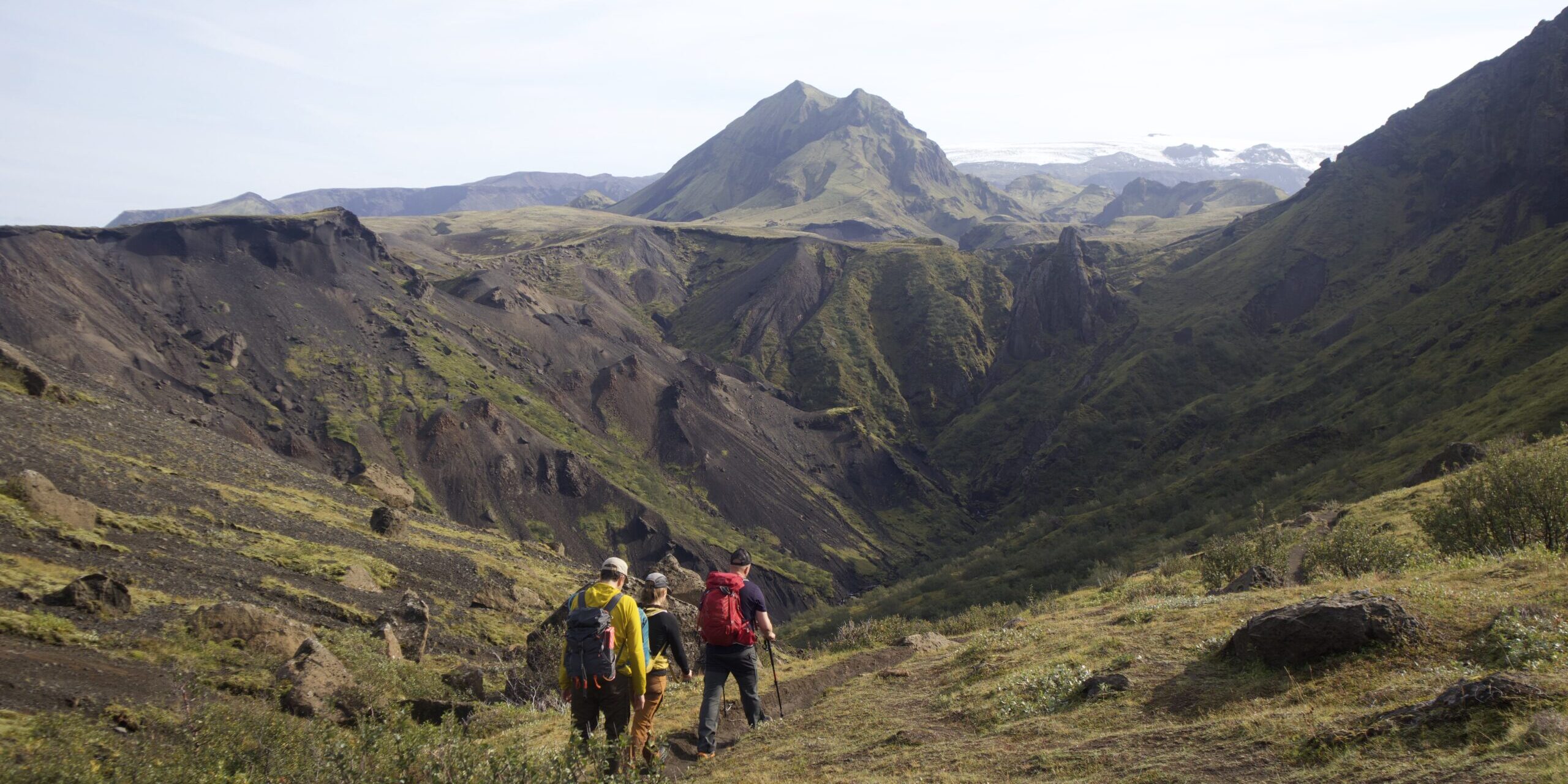How tales of gods and giants influenced Iceland’s landscapes forever.
First let me state in no way in this article intended to make light of the recent seismic activity in the Reykjanes peninsula. Earthquakes, volcanoes, and severe weather are an unfortunate threat to the safety of people and their livelihood. Our earth is always changing and this is inevitable. Residents have been fortunate that recent eruptions have been relatively safe and accessible for admiring and I am one of the lucky few able to witness this up close in 2021. I hope this trend continues and with minimal disruption to infrastructures and Iceland’s economy that so many have endured to sustain.
To help the residents of Grindavìk please consider making a donation to the Icelandic Red Cross at:
Ever wonder what formed the mysterious canyon known as “shelter of the gods” in N. Iceland? Or how Thor’s Valley came to be? Or what causes earthquakes? Or what is the tale behind Iceland’s most mystical waterfall? In this post I will explore some of the folktales behind a few of Iceland’s most mysterious attractions.
A God and His Eight Legged Steed
Imagine this….
The god Odin rides his eight legged steed, Sleipnir, across Bifrost, the bridge from Asgard to Midgard. Hoofbeats sound across the nine realms as Sleipnir quickens his pace. They descend through the mist, leaving the rainbow bridge behind them. The halls of the gods are no longer visible- just a glowing sphere in the distance. Runes glint and gleam across Sleipnir‘s flank as the moonlight illuminates his shape. Midgard, the realm of mortals, comes into view.
Odin commands his steed to land. A single hoof touches down into the earth, leaving an imprint that would mystify experts for centuries.
This is my reimagining of the folktale that formed the tourist attraction known as “Àsbyrgi” Canyon or “shelter of the gods,” in North Iceland. This is just one of the many myths that have inspired Iceland’s unique landscapes. Let’s take a closer look at a few places in Iceland you may encounter on your visit and the mythological lore associated with each.
Are these tales fact or fiction? You can decide for yourself!
Folktales and Fiction
What is a folktale and why are they significant
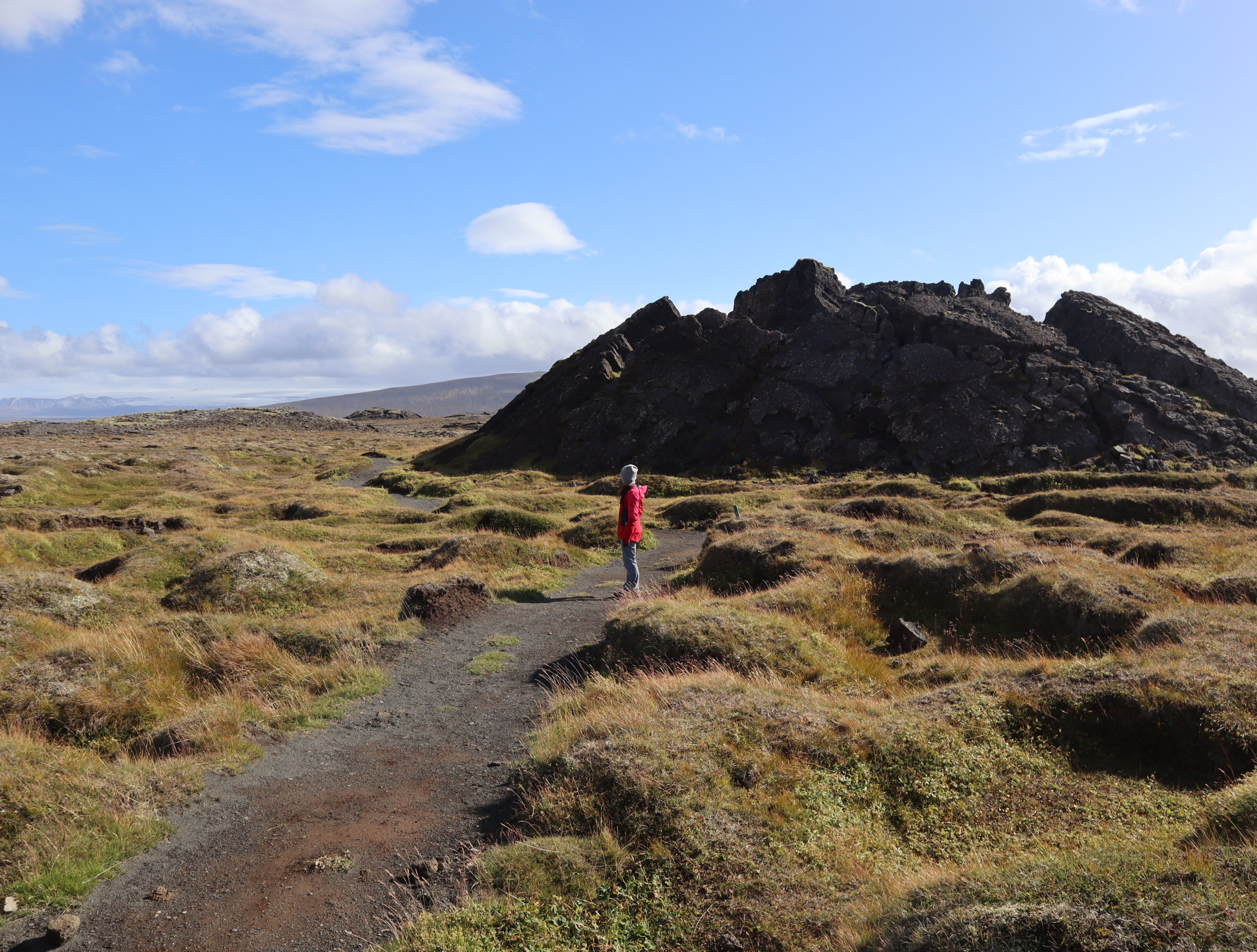
The word folktale is defined in the Oxford dictionary as “a story originating in popular culture, typically passed on by word of mouth.” It originates from the German word “volk” or people, and are typically simply understood stories featuring mythical beings and magic that have been passed down orally for hundreds of years.
Mythology and folktales have been around for a long time, the first record being the Western tales of Ancient Greece circa 6th century A.D. Norse mythology, the backbone of the religion of Iceland’s first settlers, is young in comparison.
But why are these tales important to a nation’s culture? Recently the Reykjavik Grapevine interviewed Terry Gunnell, professor of Folkloristics at the University of Iceland who explained why these tales are important to the Icelanders, specifically belief in the Hidden Folk or “elves.”
“For some, the belief in hidden people is a way of maintaining a connection to the past and their cultural heritage,” Terry explains. “For others, it is a way of coping with the stresses and uncertainties of modern life.” (source: The Reykjavik Grapevine).
I personally believe folktales have a tremendous impact on strengthening our relationship with nature and the land. If we assign purpose and spirit to the land and nature and associate it with something beyond what we see, then it would make sense we will hold more reverence to it!
Regardless if one categorizes folktales as fact or fiction, they still hold value in traditions and deserve to be celebrated, shared, and preserved all over the world!
Iceland’s Mythological Roots
The word I use to describe Iceland is “otherworldly,” and if you spend time exploring this country, you will see why. From Ásbyrgi Canyon to the mind blowing scenery in Thorsmork, there is no shortage of landscapes that will leave you asking, is this place real?
Iceland is so otherworldly, NASA has used its highlands area as a training ground because it is the closest to what Mars or the Moon looks like!
Besides being scenic, this little island is also one big geological treasure chest full of volcanic activity. Tour the south coast and you will be awed by its endless lava fields and impressive craters. Iceland sets the stage to display mother nature’s power It is a prime playground for landscape photographers, geologists, and scientists from all around the globe.
Since the dawn of time people have been trying to make sense of our world, Some choose science, other choose to believe in the supernatural, while some choose both!
The backbone of Iceland’s first religion is Norse mythology. Long before Marvel released its first Journey into Mystery comic book depicting a red caped god wielding a hammer, people told tales of the god Thor and his adversary, the giants.
For some it’s hard to comprehend that these “characters and stories” were not a product of Stan Lee’s imagination, but an actual belief system brought to Iceland by its first settlers and still followed by many to this day. Iceland’s first settlers were pagan, honoring gods who are now household names such as Thor and Odin. They believed in giants, trolls, and another special grouping of beings known as the “Álfar” or Hidden Folk– or the elves.
Norse mythology was introduced to Iceland by its first settlers in the 9th century, but not recorded until the 13th century by historian, Snorri Sturluson.
In 1222 A.D Icelander, historian, and Christian monk, Snorri Sturluson revolutionized prose fiction when he penned the Prose Edda, a collection of tales based on gods and humans. These tales, along with the Poetic Edda became the backbone of Norse mythology, inspiring an entire religion, movies, and books. In fact if the Prose Edda didn’t exist, there might not be a Lord of the Rings or even a Marvel comic book. One can argue Sturluson was the first to bring the Norse gods and their stories to our “living rooms.”
In the year 1000, under the mounting pressures of the Norwegian King, Iceland converted to Christianity. This conversion didn’t force Icelanders to cease pagan practices but did require them to keep them in private.
Despite this, tales of gods and giants live on in her landscapes. Ask any Icelander about the mysterious rock formations off the coast of the black sand beach in Vik, or the infamous “troll church” in Thorsmork, and you will come to find out how important Icelandic folklore is to their culture. Not to say they all believe these stories to be true, but according to a recent survey conducted, a large percentage of the population won’t deny the possibility!
But honoring. the old gods is far from over in the land of fire and ice. A new temple dedicated to the old Norse gods such as Odin, Freyja, and Thor was erected just outside Reykjavik. The Arctic Henge, a pagan monument on Iceland’s north coast, is said to become a place of pilgrimage for those who follow pagan beliefs when it is completed. This all begs the question, is Iceland slowly creeping back to its roots?
I, being fascinated with Norse myth, was eager to see first hand some of these places inspired by these tales. On my first visit I could feel the mystery unraveling, a knowing that this place was steeped in spiritual significance.
One of my first trips to Iceland I hiked a short section of the Fimmvorduhals ridge in Skogar. I stopped at one point, awestruck by the scenery. Rows of waterfalls fell from emerald green cliff sides speckled with grazing sheep. The glacier shone in the distance like a diamond. It really looked like a scene from Lord of the Rings! And a fun fact- Iceland’s myths, language, and landscapes inspired one of the most well known authors of all time – Sir JRR Tolkien himself.
This moment defined my interest in Iceland’s “unseen” history and I began a quest to uncover even more of the stories that make this little island so unique.
Let’s explore some of the places in Iceland influenced by folklore, but first, a very basic background on Norse mythology, the influence behind Iceland’s first religion.
A Little Course on Norse
Norse mythology is the foundation of the Old Norse belief system. I feel it is one of the most complicated and unclear of the mythologies, mainly due to the controversial writings of Snorri Sturluson. Snorri is responsible for writing the Prose Edda, a series of tales concerning the Norse gods, as well as introducing a new style of writing to the little island known as prose. But Snorri is considered unreliable by some due to being heavily influenced by his Christian background. Nevertheless, he revolutionized Iceland’s story telling and inspired many folktale writers. Some argue, without Snorri, Norse mythology would be lost forever.
To take a clear look at Norse Mythology we would need much more space than this post allows. So for the sake of keeping it simple, here are the very basic foundations. At the end of this section you will find some recommended reading if you care to learn more about the stories of Norse Mythology.
In the Norse Cosmos there are nine realms, Asgard being the realm of the Æsir gods such as Odin and Thor as well as some of the Vanir gods such as Freyja and Freyr. The land of humans, (us) is Midgard and the land of the giants is Jotunheim. Jotunheim is a wild place that is rarely ventured to and is separated from the other realms by a vast and dangerous ocean.
The giants are the adversary to the gods of Asgard. They are beings of chaos, where the gods are beings of order. Giant and the word jotun has been used interchangeably but there is no evidence that jotun translates to giant. However it is assumed if you see the word jotun, it is referring to a giant. Trolls are a different race of beings all together and Iceland is rich in troll lore! (I will delve into this on another post!)
The existence of all these beings maintains order in the cosmos. Then there is Loki, a giant who lives amongst the Æsir, who both creates and solves most, if not all, the problems you will read about in Norse Mythology.
Unlike traditional Christianity, there is no “hell” in Norse mythology, a place where awful people go to die. Instead there is Niflheim, or Helheim, the ice realm where those who die of sickness or starvation, go to rest.
It was believed by the Norse, that the best way to die was an honorable death. Those who did went to either two places, Fölkvangr, the goddess Freyja’s hall, or Valhalla, (Hall of the Slain), Odin’s Hall. In Valhalla the honorable dead will feast and fight until the end of days, a time referred to as Ragnarök, where the gods will fight the giants. Personally this doesn’t sound very appealing to me, but to the Norse, this was their idea of heaven.
I will talk later in this post about a place in Iceland where it is believed you can view Valhalla from! First, a quick story on the creation of the worlds….
The Norse Story of Creation
The Norse believed the cosmos were formed when waters from the mist world met the fire world. Fire and ice collided in the center of the universe creating the most cataclysmic event ever to happen. This chaos led to the first life, a huge being known as Ymir.
This act reminds me allot of the subglacial volcanoes, explosive eruptions that expel a tremendous amount of ash into atmosphere as well as produce glacial melt. They have a tremendous influence on the landscape as well as cool the earth’s temperature They also create some of the most fertile soil in the world. Much like the story of creation of the Norse cosmos, chaos creates life, and where else is this witnessed, but Iceland!
From Ymir, all life sprang forth. Without getting into the nasty details, The gods Odin and his two brothers slayed Ymir (what a horrible thing, but had to be done!) and used his remains to shape the worlds. His skull became the clouds, his blood, the oceans and so on and so forth.
After spending who knows how long, trampling across the universe, the three gods grew bored and decided to create humans out of two pieces of driftwood which they found on a beach. Odin gave the first breath, the second god Hoenir gave us mind, and the third god Loður gave “color of blood,” which some interpret as desire or passion. I know, not very glamorous. According to the Norse, we are made of driftwood, but I suppose they could have chosen far worse things!
There is much more to it than this, and you may find some stories vary in detail such as the tale of the Norse god’s Thor’s fishing trip in the Prose Edda is different than the one in the Poetic Edda.
I suggest starting with the very digestible version of Norse Mythology by Neil Gaiman and then delving into the Poetic and Prose Edda.
Now that we established a wee bit of foundation to Norse Mythology (which now I am feeling this page needs a corner dedicated to just that!) let’s talk about some landmarks in Iceland you may want to visit if Norse Mythology interests you!
Book Recommendations for Norse Mythology
Prose Edda Penguin Edition
Jackson Crawford’s The Poetic Edda
Norse Mythology by Neil Gaiman
Norse Gods by Johan Egerkrans
Þorsmörk (Thorsmork)
How the valley of the thunder god Thor, one of Iceland’s premier destinations, earned its name.
Translates to “Thor’s Woods” in Old Norse
Southern Icelandic Highlands
Accessibility: Year round with a qualified guide
GPS coordinates: 63.6807° N, 19.4826° W
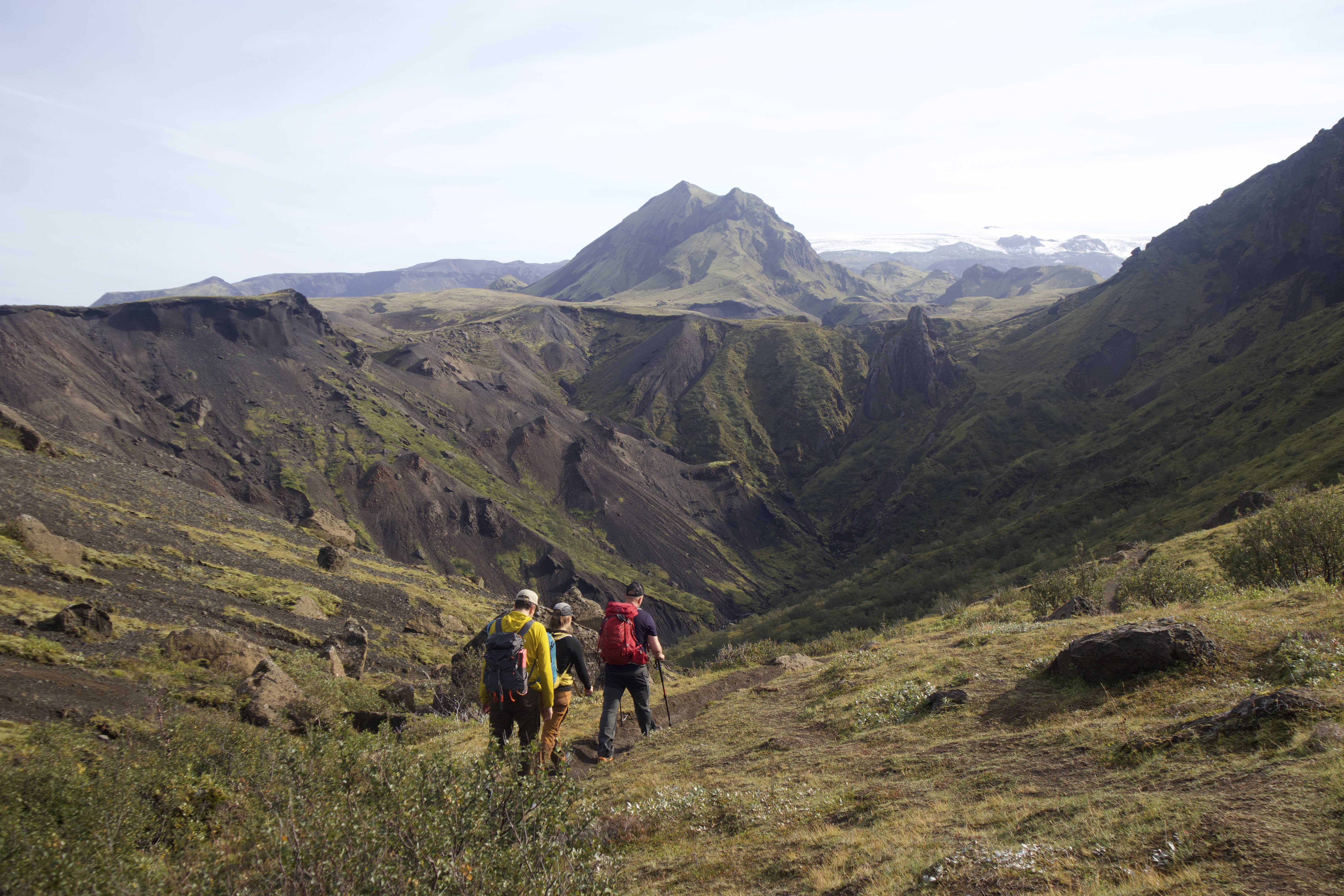
Thanks to Marvel, Thor is now a household name. But what most don’t know is that the Norse god Thor existed a long time before Chris Hemsworth wielded Mjölnir on the big screen. Thor is one of the most well-known and worshipped gods in Norse mythology. A son of the god Odin, he was depicted as the strongest of all the gods, wielding his indestructible hammer Mjölnir, or Lightning Maker, which he slayed giants with. He was believed to be the protector of Midgard or earth, his mother being the earth goddess Jorð. Thor travelled across the skies in a chariot pulled by two goats, Snarler and Grinder. The Norse people’s believed when thunder rumbled, Thor was traveling across the sky in his chariot.
Thor, along with the harvest god Freyr, was known as the god of farmers, as it was believed he could summon rain with his hammer.
According to an Icelandic folktale, Thorsmork, or “Thor’s Valley” (translates to Thor’s Woods” in Old Norse) was formed when Thor struck the earth with Mjölnir creating a huge crater in the land.
Beyond the myths, Thorsmork is steeped in secrets and stories of a bygone era such as the legend of the Snorrariki cave or Trollakirkja, “troll church.” Thorsmork is also believed to be a place inhabited by the “Huldafolk” or “hidden folk,” supernatural beings of Iceland’s past and present. You will notice many faces in the rock formations throughout Thorsmork, so it is in your best interest to be respectful to the land- they are watching!
Thorsmork is situated in Iceland’s South Highlands, between the mountain glaciers of Tindfjallajökull and the world-famous Eyjafjallajökull, and Mýrdalsjökull. The rivers Krossá, Þröngá and Markarfljót border the heart of this valley.
This tranquil valley is one of Iceland’s most precious jewels, a place hidden from the main stay of tourism. The ever changing landscape is steeped in dramatic scenery with fields of black sand bordered by imposing mountain peaks and enormous shining glaciers. The valley appeals to hikers and nature enthusiasts alike with its unique fauna. If you embark on a hike in this valley make time to stop and enjoy the scenery, and the deafening silence!
Thorsmork is always changing due to the three glaciers which call the valley home, Tindfjallajökull, Eyjafjallajökull, and Mýrdalsjökull. It is not uncommon for guides to communicate daily river crossing conditions as they change rapidly due to the glacial melt.
Thorsmork, despite being home to Iceland’s most infamous and disruptive volcano Eyjafjallajokull, boasts some of Iceland’s most pleasant weather and can be explored all four seasons with a reputable guide. This doesn’t suggest one can be naive about weather patterns here, as it can still be unpredictable.
On 31 km trek to Thorsmork via the Fimmvorduhals ridge trail, you can spot the twin volcanoes Mogdi and Magdi (Strong and Brave) named after Thor’s sons in Norse mythology. I highly recommend this hike, although it is best done with a guide in the summer months due the unpredictable conditions you may encounter and length.
I have visited Iceland now five times and Thorsmork has become one of my favorite places to explore in both winter and summer months. I recommend booking a tour with Midgard Adventure who offers both super jeep and hiking tours through Thorsmork.
You can read more about Thorsmork in my post here https://wordpress.com/post/anowliniceland.wordpress.com/92
If you would like to visit a once holy ground to the Norse god, you can in the west at Mount Helgafell. According to folktale if you hike up Helgafell in silence and make a wish at the top it will come true. It is also believed by some you can see Valhalla from its summit.
To book with Midgard Adventure
/https://midgardadventure.is/signature-tours/
Loki and Earthquakes
How the Norse trickster god shakes our world.

Marvel also introduced Thor’s mischievous brother, Loki, another Norse god that was around way before Stan Lee existed. Loki, is actually Odin’s brother and depicted as sly, lustful, and somewhat evil in the Norse tales. He is one of the most debated figures in mythological lore due to his mercurial, and wily ways. Most find Loki very interesting, and if your reading takes you down the Norse myth rabbit hole, I bet you will to!
There is allot of debate on who and what Loki is. I have even been told by some Icelanders they believe Loki is not a god, but a fire sprite, or land fire spirit. I will stick to the lore for now but there is a bevy of articles on academia that debate these ideas!
Iceland is known for being exceptionally rich with volcanoes. Step outside your rental car in Reykjanes and you will be engulfed by the aroma of the sulfuric air. I personally love that smell as it reminds me of Iceland! Some of Iceland’s most popular tourist attractions are based around the geothermal activity produced from this, including the popular Blue Lagoon, Reykjadalur thermal rivers, and the Mvatn Nature Baths. In fact, there are five geothermal energy plants in Iceland which provide the country with over 26% of its electricity! That’s pretty incredible, now back to the folklore….
The unfortunate companion to the volcano is the earthquake. Iceland has broken records with seismic activity and over a recent week, experiencing over 2000 quakes!
What does this have to do with mythology you ask? According to Norse mythology, who is behind these natural disasters, but the trickster, Loki. Here is the story of why…
In the Norse tales, Loki, contrives a plan to trick the blind god Hod into killing the most beloved gods, Baldur with a mistletoe arrow. Long story short, Loki gets caught and punished by the gods. Bound with the intestines of his own son (yikes!) he is tied to a rock deep below the earth. But if that is not cruel enough, the goddess Skadi (still bitter about one of Loki’s previous tricks) ties a poisonous snake over him so that the venom drips on his face for all eternity.
Loki’s loyal wife Sigyn would not stand to watch her husband suffer, so she sits there with a bowl to collect the venom. Every now and then she must empty the bowl, leaving Loki to suffer as the venom drips on his skin. It is so painful he trembles with such violence it shakes the ground. This is what we know as earthquakes, which is why some people associate Loki with earthquakes, and the subsequent side event, volcanoes.
Some also associate the Norse god Thor with earthquakes in that the eddic poem Lokasenna, “the ground quakes” when Thor arrives to Ægir’s Hall.
According to science, what actually causes earthquakes is sudden movement along faults with the Earth. On average Iceland can experience 26,000 quakes in one year. This is due because of Iceland’s position on a tectonic plate boundary. Luckily, most of Iceland’s earthquakes are mild, measuring only a M 1.0 on the Richter scale.
You don’t have to venture far to find dormant volcano craters and gorgeous lava fields to hike in Iceland. There are too many to list but here are some of my favorite lava fields by region. Fun fact: Hraun means lava in Icelandic.
Southern Iceland
Eldhraun Lava Field – This is part of the Katla geopark and is absolutely gorgeous with rows upon rows of green lava moss!
GPS coordinates: 63.6769° N, 18.1408° W
Western Iceland
Buðir Lava Field Snæfellsnes Peninsula This is by far one of my favorite places in Iceland. It is also home of that picturesque little black church you see below. The lava field stretches out so far it appears to be infinite and if you wish you can hike to and up the Budirklettur crater.
GPS coordinates: 64.8230° N, 23.3850° W
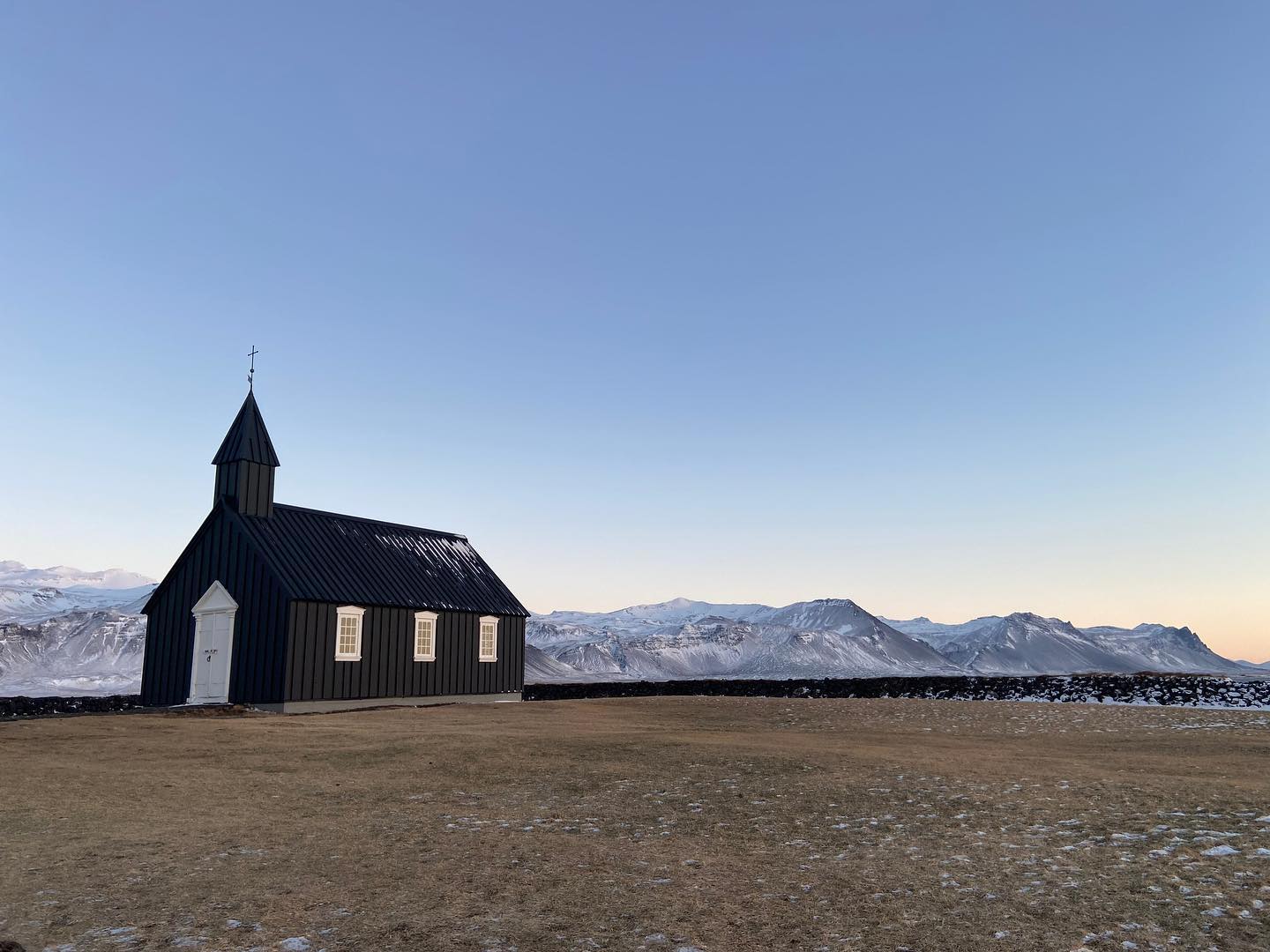
North Iceland
Dimmuborgir – This place is like stepping into an episode of Game of Thrones, and oh, wait, because Game of Thrones was filmed here! The rock formations make you feel as if you are walking among giants!
GPS coordinates: 65.5912° N, 16.9123° W
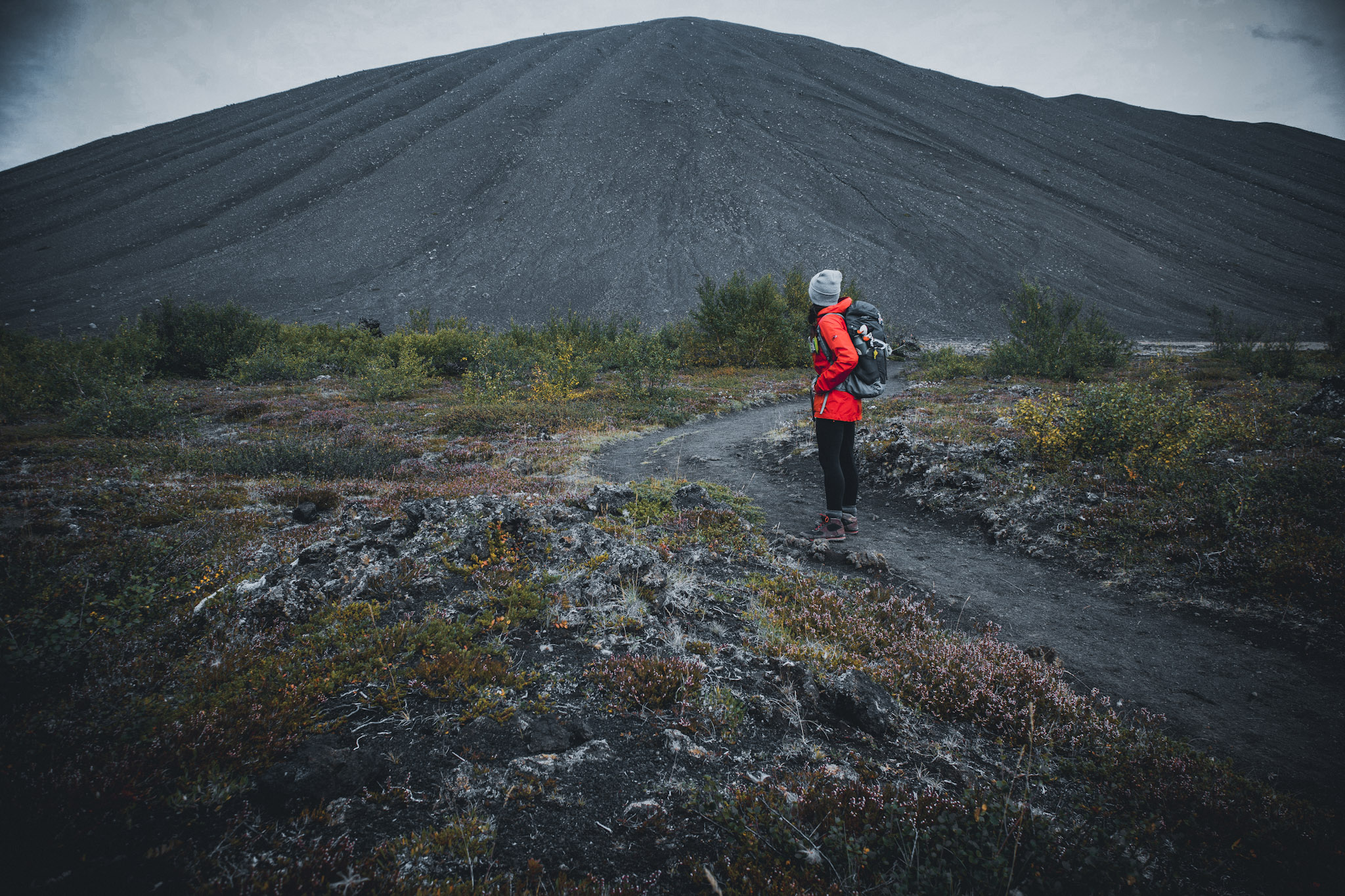
Fire Demons and Lava Caves
The cave once inhabited by a fire demon.
GPS coordinates: 64.781464, -20.723667
In the Borgurfjordur district on the Hallmundarhraun lava field in Western Iceland, lies another mystery- Surtshellir cave. This cave forms a complex with the lava cave, Stefansshellir which has baffled archeologists for years.
Surtshellir is affectionately named after Surt, the fire demon who will drive his sword through our world at the end of the worlds, a time known in Norse mythology as Ragnarok. This cave is believed to be haunted and once inhabited by the fire demon himself.
I have yet to visit this cave as it is only accessible by an F-road that had been closed during my travels. It is described as “giant in scale” and a “leviathan’s” burrow due to its imposing size. This unique cave continues to fascinate archeologists and I have read some debates on whether or not this had been once home to a Viking structure or not.
Due to the rough F road that you need to take to visit here, I would suggest a guide or at least checking road conditions before your visit. Surtshellir is only accessible from May until October and requires an F road capable vehicle to reach. Please check with your rental car company before attempting any F road driving that your rental is able to do so!
Ásbrygi and the Eight Legged Horse
How this mysterious horse shoe shaped wonder and capital of the Hidden Folk in North Iceland, came to be.
Trans. “Shelter of the Gods”
Location N. Iceland 38 km east of Husavik
Open daily from May until October
Part of Iceland’s Diamond Circle
GPS coordinates: 66.0178° N, 16.5055° W.
Odin is the highest of all the gods. He sits atop a chair named in Asgard and looks out over the nine realms. His two ravens Hugin and Munin deliver him news. Odin is said to be the wisest and the most ruthless of the Æsir gods and endured much sacrifice to gain the knowledge he possesses. So how does the highest of the gods travel? Atop his eight legged horse- Sleipnir.
Sleipnir is said to be the best horse. He is the strongest, the fastest, and the most resilient able to journey from the realm of the gods to the mist realm. He was birthed by Loki (yes you read that right) and then gifted to Odin. While Thorsmork is said to be the imprint of Thor’s hammer, the intriguing canyon in N. Iceland, Ásbyrgi, is believed to be the hoof print of Sleipnir.
So imagine this if you will; Odin atop Sleipnir, a majestic eight legged steed, galloping across the rainbow bridge from Asgard to Midgard when BAM! Sleipnir plants one hoof into our earth to form a canyon so mysterious it would attract over 114,000 visitors a year!
Ásbyrgi canyon or “shelter of the gods,” boasts a length of 3.5km and spans 1 km in width, but its most impressive feature is the 100 metre high cliff faces which border the park.
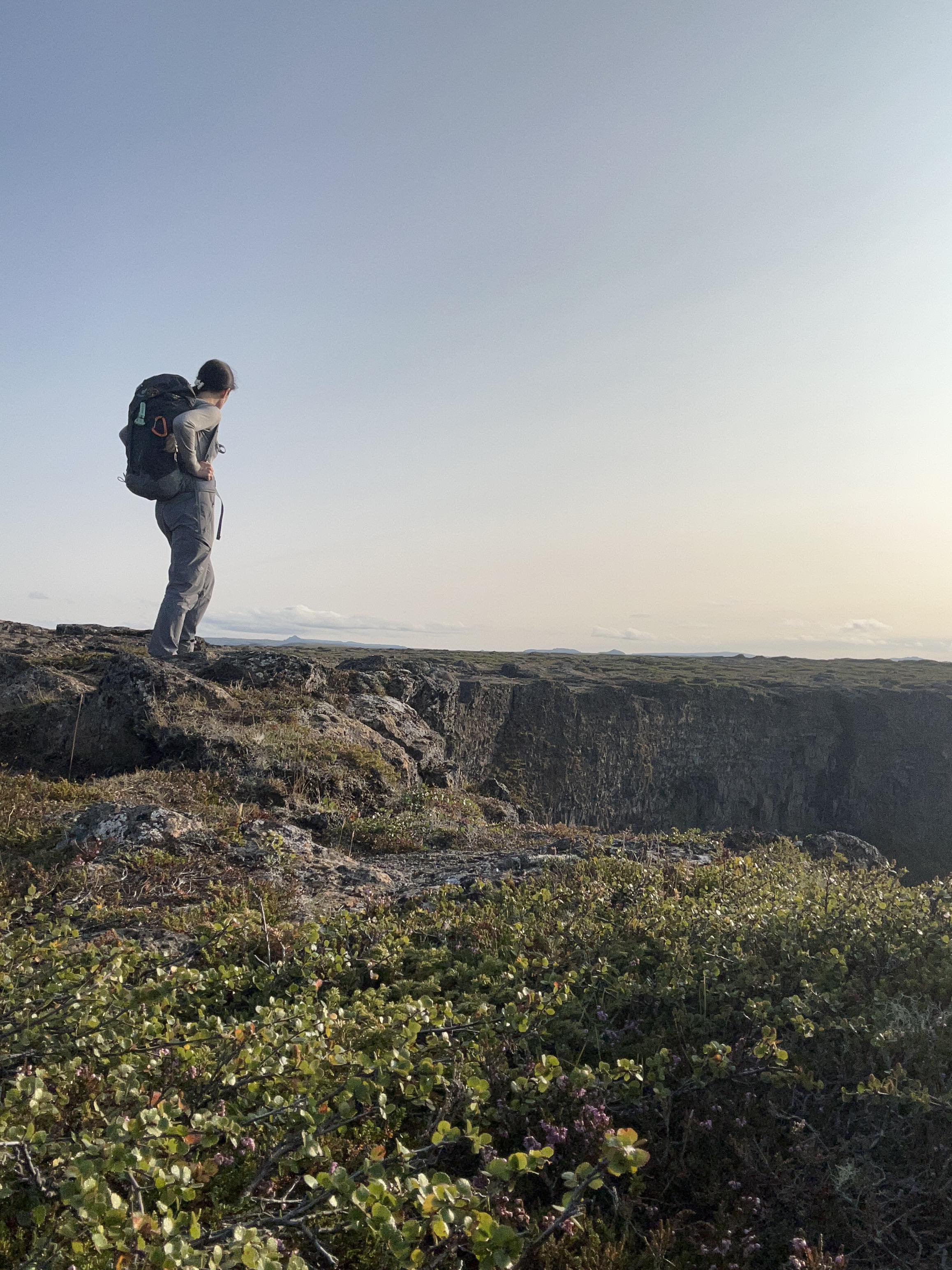
Scientists believe this canyon was formed by a catastrophic flood from the nearby Jokulsa river caused by a subglacial eruption beneath the ice cap of the Vatnajökull glacier 8-10 million years ago!
Ásbyrgi is also believed by many to be the capital of the Hidden Folk in Iceland. The Hidden Folk or Huldafölk, are the supernatural masterminds behind the bizarre plots in Iceland’s most beloved folktales.
Spend some time looking around in here and you will clearly see how this natural feature came to be their capital! The rock formations are both spectacular and mysterious with colossal sized stacks and a 25 m island known as “Eyjan,” which cuts the canyon in half. Mystics have claimed to both seen and heard these beings in the canyon’s crevices.
Ásbyrgi is an impressive place to visit on your North Iceland itinerary. It is located in North Iceland 38 km east of Husavík and is part of the Diamond Circle, a popular tourist loop that can be completed in one day. This horseshoe shaped canyon is part of the Vatnajökull glacier park and is 3.5 km wide and 1 km deep.
You can enter the canyon from two places for two completely different experiences.
To view the canyon from within:
Follow the narrow dirt road past the main visitor center to a small parking lot. There you will find a network of short walking paths through pretty birch groves. The paths will take you to two viewpoints at a pond. From this perspective you feel like you are standing among giants within the imposing canyon walls and rock formations!
To view from above:
If you are feeling more adventurous and want a more bird’s eye view of the canyon, you can hike around its ridge trail. I began this trail near the main visitor center. It is a little tricky to find. To the left of the visitor center there is a golf course and to the far left corner you will see a wooden gate. Enter through the gate and bear right up the path.
The path will turn left onto a dirt single track trail. When I went the trail was overgrown at the beginning with blueberry bushes and a little tough to find at first. Eventually it opens up to be a smooth single track, and somewhat rocky, in places so I would suggest wearing a pair of sturdy hiking boots. I recommend downloading the All Trails map for the hike. This is the best option for those wanting that epic canyon view from above!
All Trails link
/https://www.alltrails.com/trail/iceland/northeastern/asbyrgi-canyon?u=i
Goðafoss
How Iceland’s most mystical waterfall became the waterfall of the gods.
Location: N. Iceland 45 mins from Akureyri
Part of Diamond Circle Loop
Open year round- Free to access
GPS coordinates: 65.6828° N, 17.5502° W.
I mentioned earlier Iceland was Christianized in the year 1000. This meant Icelanders who chose to continue to practice paganism had to keep it private. This decision was made by a man named Thorgeir Ljosvetningagodi at the Allþing, Iceland’s parliament (the oldest supreme parliament in the world!)
It is believed when Thorgeir made this decision, he tossed his idols of the old gods into a waterfall in Northern Iceland. This waterfall is known as Goðafoss or waterfall of the gods, and is one of Iceland’s most photographed falls.
Goðafoss is one of the most spectacular falls in Iceland and one of my favorites to visit. The river Skàlfandafljòt, which originates hundreds of miles away from the Highlands, flows down a curved edge from a height of 12 meters. Rows of waterfalls cascade into a serene pool of water, 30 meters in width.
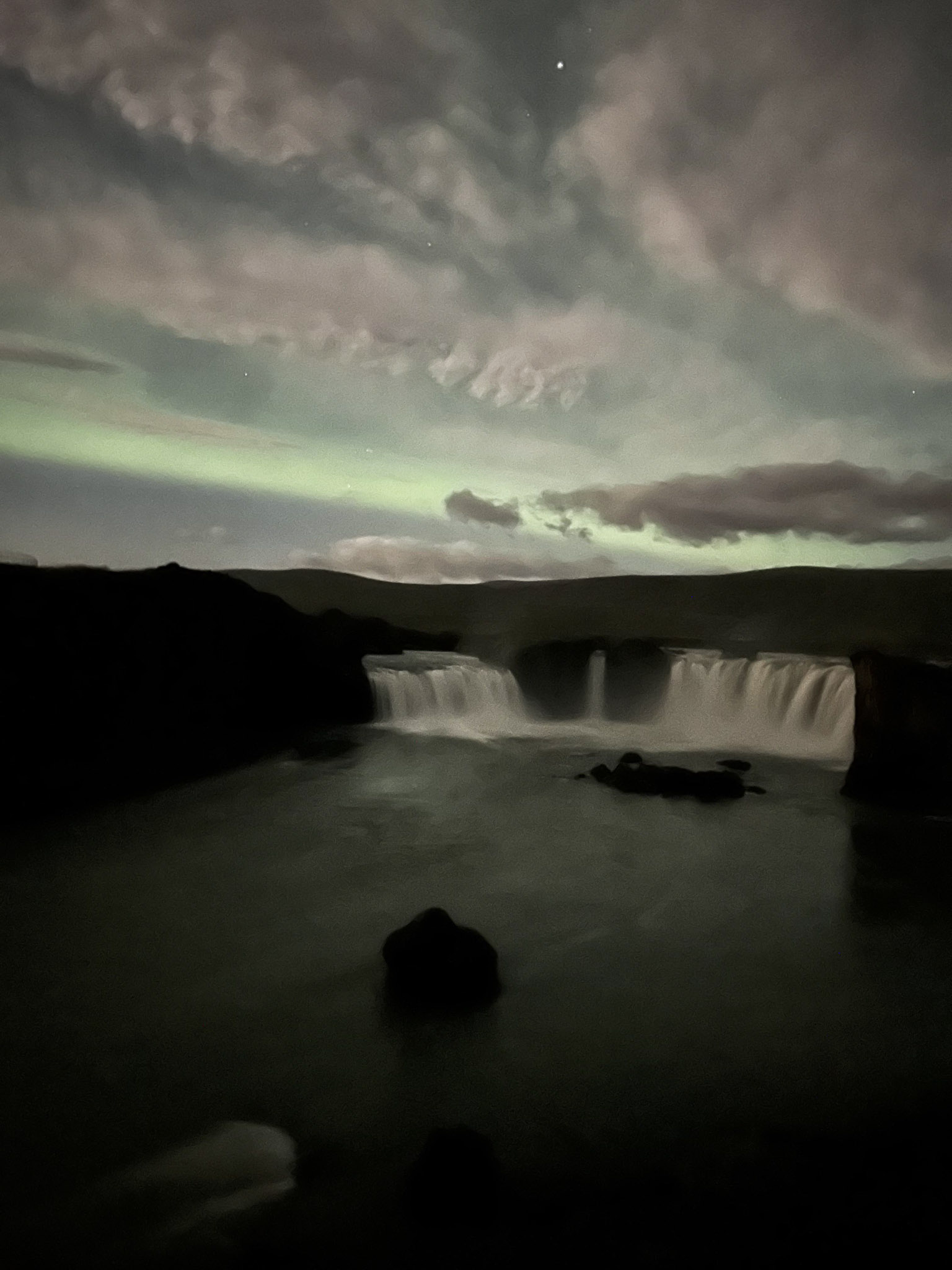
Personally I enjoy visiting Goðafoss on a clear fall/ winter night as it offers a great chance to see the Northern Lights and provides a stunning foreground for the green lady. However no matter time of year, these falls are breathtaking and a must do on your North Iceland itinerary.
During my visits I like to sit near the falls and reimagine what it was like for Thorgeir to toss his idols into the water. I’d like to believe that because of this action, the essence of the old gods will flow in these waters forever.
How to visit Goðafoss
Goðafoss is located in North Iceland and is part of the Diamond Circle, which includes Àsbyrgi canyon, Mvatn, the charming fishing town of Husavìk and the powerful Dettifoss.
There is no fee to park here, and It offers two lots to choose, but I would recommend viewing Goðafoss from both sides which is accessible by a small foot bridge. There is a path down to the falls but take caution as the rocks are very uneven and become slippery from the spray.
Tips for your visit
Get there early. I say this for every accessible waterfall in Iceland or better yet, if you are a night owl and hunting the northern lights, this is a great spot, far away from any light pollution. The falls provide a gorgeous foreground for the aurora or just on their own.
The Arctic Henge
A new installation dedicated to the old gods
Location: Raufàrhöfn N. Iceland
GPS coordinates: 66.4622° N, 15.9622° W
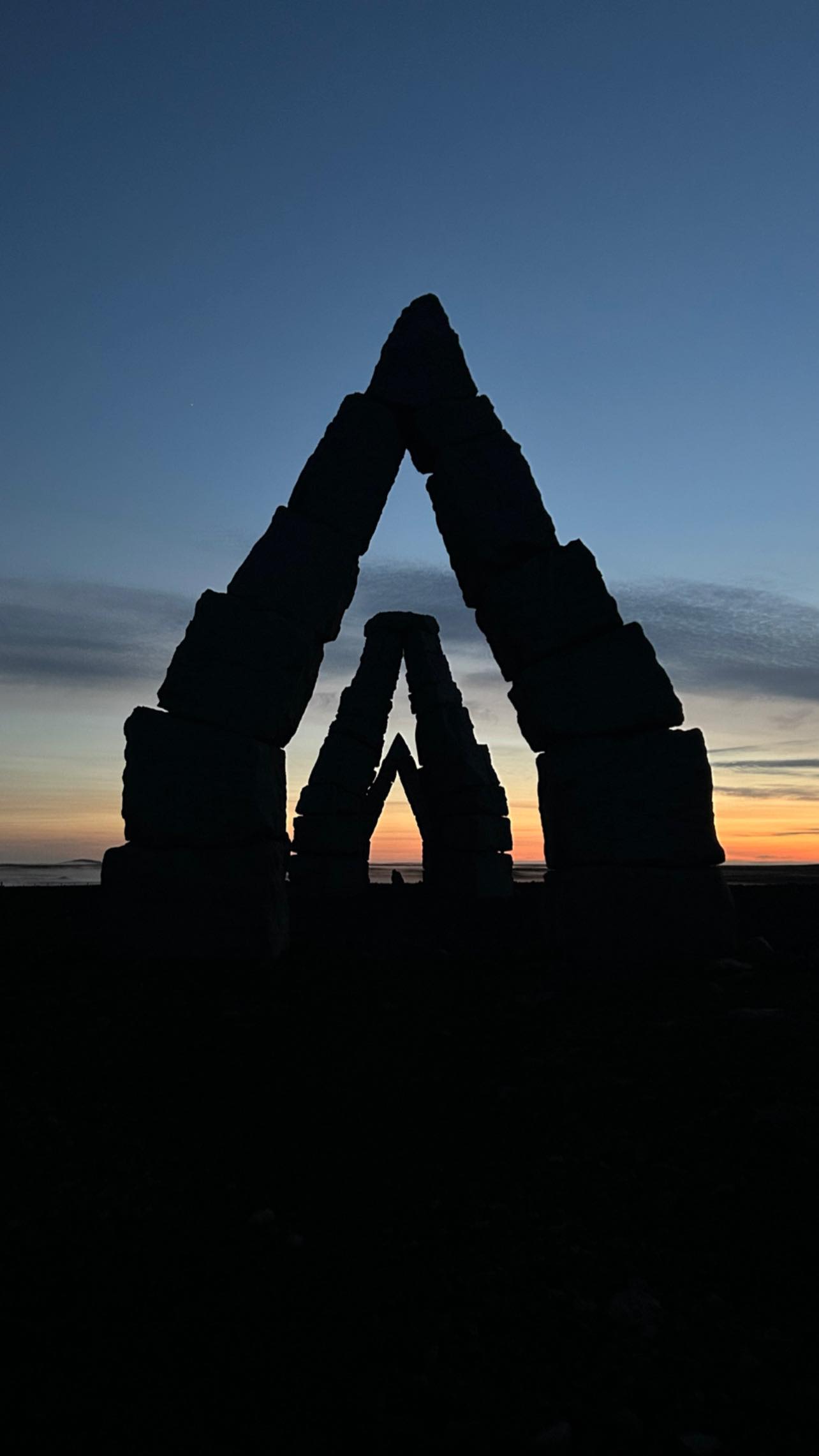
Standing in the most northern part of Iceland’s main continent, in the unassuming town of Raufàrhöfn, is another site steeped in mysticism – The Arctic Henge.
Like the other places mentioned, the newly erected Arctic Henge is inspired by old tales, but unlike the others, it is manmade.
In the old eddic text Völuspa, an unnamed seer delivers the prophecy of the nine realms to the Norse god Odin. This prophecy, known as Ragnarök, depicts a gloomy outlook where the worlds will meet their ultimate doom. Giants will march to fight the gods; a ship of the damned will set sail; the worlds will be in asunder; kin will fight kin; an eternal ice age will reign until Lord Surt drives his sword through Midgard to end it all- sounds optimistic right?!
Not really, so why was this sun dial erected again?
The Henge is still under construction but when finished is said to become a place of pilgrimage for those around the worlds who still follow the old gods. Each of the 72 stone blocks is named after the dwarves in Norse mythology, beings of creation which were named by this seer in Völuspa. The dwarves are each believed to represent the seasons as well as other symbolic queues in the mythos.
When the installation is completed visitors will be able to view the midnight sun through its various formations. I have to say this has to be one of my favorite places in Iceland. I waited years to have the chance to visit it, and I would love for my travels to take me here again.
The Arctic Henge is supremely peaceful when visited under the right conditions. I’d go as far as saying it was the most peaceful, I have ever felt. Sitting there in silence I felt whisked away from all my worries and doubts, perhaps it was a bit of the old ways shining through to me.
You can read more about the Arctic Henge and my incredible experience during my visit here: https://wordpress.com/post/anowliniceland.wordpress.com/112
Plan your visit:
I would say arrive early or late in day is your best option for less crowds. Despite its remoteness, the henge still draws many visitors. Parking is free and there is a set of stairs that climb up a hill to reach the installation. There is no facilities on site and it can get cold up there so be prepared!
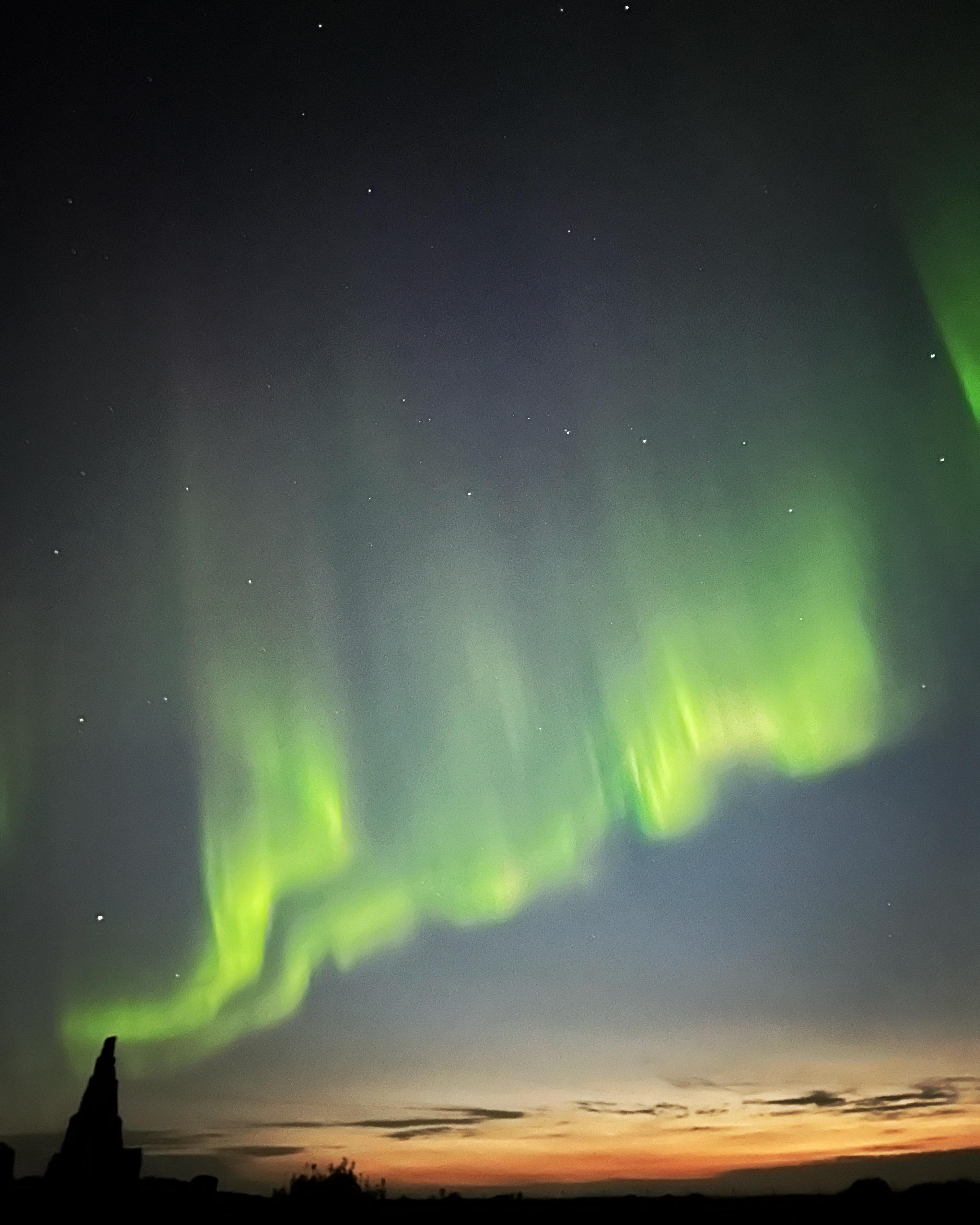
In this post I explored a few of the landscapes influenced by the gods and giants of Norse mythology. Although I have read many of the folktales, I am still curious and eager to learn more. What stories have been lost? What stories are unique to families, regions, belief systems, and what stories have yet to be told? What stories does your culture have that you would like to pass on?
I also would recommend paying a visit to the Viking Museum near Keflavik which has an entire wing dedicated to Norse mythology and a replica Viking longboat.
Furthermore if you are especially interested in mysticism and your travels take to the West Fjords, pay a visit to the Icelandic Museum of Sorcery and Witchcraft! You can read more about this place here:
/https://wordpress.com/post/anowliniceland.wordpress.com/145
There is still SO much more to cover, read, and learn about. Look out for my upcoming posts about elves- as well as my newsletter signup to receive a free copy of a short story based on Icelandic folktale associated with the popular tourist destination- Skogarfoss.
Hope you enjoyed this light overview of some of the places in Iceland inspired by Norse mythos! If you like this blog consider giving my instagram a follow where I will posting photos and highlights from my upcoming trips!
If you enjoyed my writing you can check out one of my fiction books inspired by Norse mythology and Iceland’s landscapes:
/https://www.amazon.com/Father-Monsters-Loki-Fantasy-Novella-ebook/dp/B09Q1HN9VB

